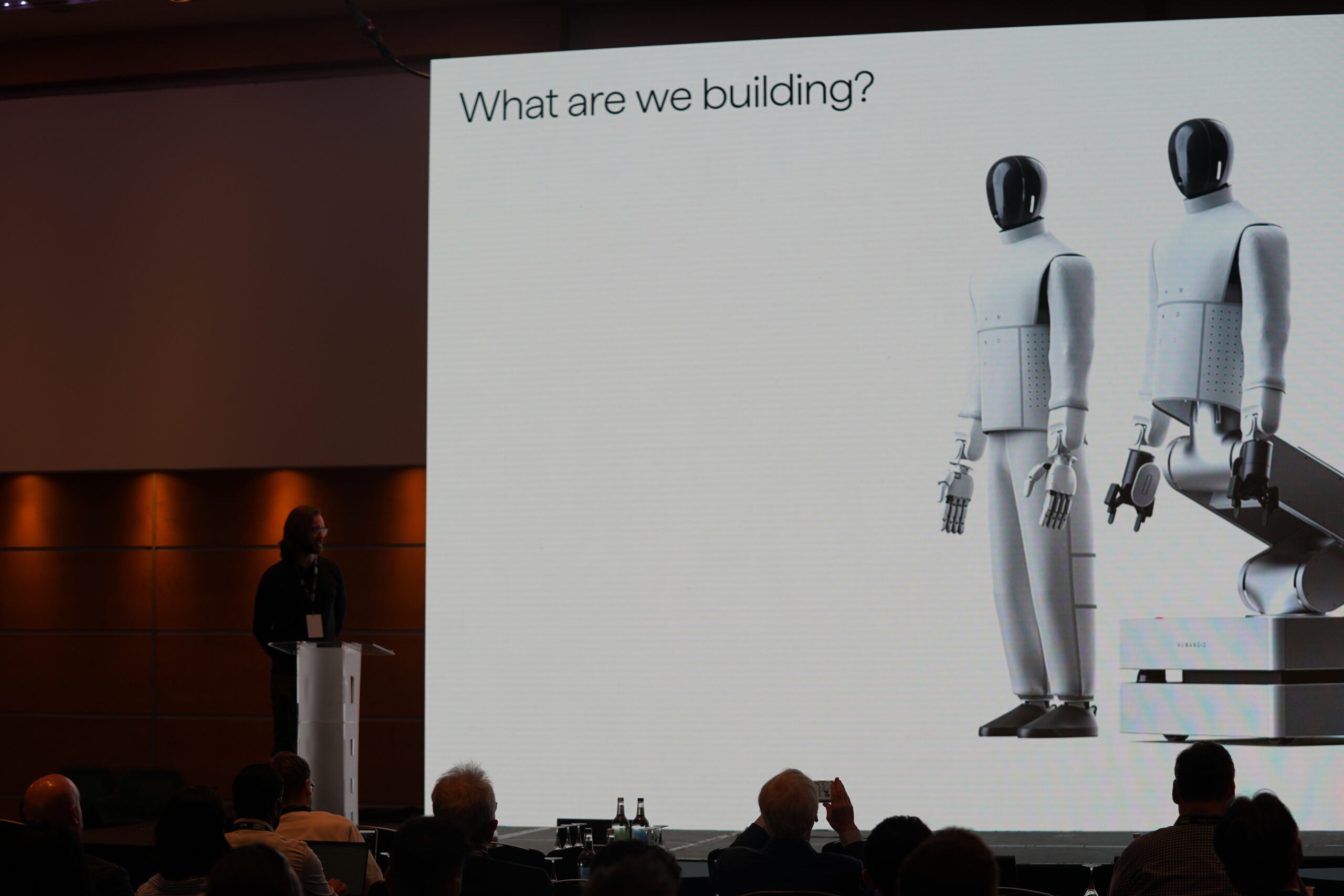“Inside a hardcore humanoid robotics company”: our takeaways from the Humanoids Summit in London
This May, London hosted one of the year’s most important robotics events and the first of its kind in Europe — the Humanoids Summit. For two days, the global humanoid robotics community came together to explore one of the most ambitious frontiers in the industry. More than 1,000 attendees filled the event space, many of them representing the future of general-purpose humanoid robotics.
Humanoid joined as a Gold Sponsor, took the stage for a keynote, and spent two days connecting with founders, investors, researchers, and media from across the world. We came to support the community and take part in discussions, and we left with fresh ideas, and meaningful conversations.

Humanoid team at the Humanoids Summit in London
The industry is forming fast
The summit brought together some of the most influential players in the space, both newcomers and well-established companies.
Speakers included executives from Agility Robotics, NEURA Robotics, Google DeepMind, Pollen Robotics, and others, as well as industry experts offering a 360-degree view of where the field is heading. Topics ranged from high-level discussions about humanoids in the real world and the embodied AI revolution, to deeply technical subjects like dexterous manipulation and sensor-actuator systems.
For us, it was a chance to introduce Humanoid as a humanoid robotics company with a very specific mission and mindset.
What makes Humanoid different
Humanoid CTO Jarad Cannon took the main stage to shed light on what we mean when we call ourselves a “hardcore humanoid robotics company.”
“For many companies, humanoids are just a side project. For us, they’re our entire mission,” Jarad said.

Humanoid’s CTO Jarad Cannon at the Humanoids Summit in London
At Humanoid, everything we do is rooted in one clear goal: to build safe, reliable, and commercially scalable general-purpose humanoid robots. We’re not divided across roadmaps or distracted by other products, humanoids are everything we do.
Jarad also emphasized our AI- and simulation-first approach. We don’t just use AI to power our robots, we use it to design them as well. From sensor placement to walking policies built using Isaac Sim, simulation underpins every engineering decision we make. Our approach to hardware is AI-driven as well — we believe hardware-enabled AI is the future and we’re built around it.
Another core advantage we have is our status as a newcomer that we call a “second-mover advantage”. We are not late in the humanoid race, but right on time — with a team of veterans who’ve built and shipped complex systems before. They already know what works and what doesn’t, and how to move fast without repeating past mistakes.
This focus, together with next-gen AI and simulation tools, gives us both clarity and speed. Humanoid was founded just one year ago by Artem Sokolov, and in that short time we’ve grown to over 130 people. We’re now approaching the launch of our wheeled and bipedal alpha prototypes later this year.

Jarad Cannon’s keynote presentation at the Humanoids Summit in London
Beyond the stage: industry conversations and why we showed up
The energy wasn’t just on stage, over 48 hours, the summit floor buzzed with conversation. Our team held more than 50 meetings with potential partners, researchers, investors, media, and other companies.
We discussed everything from actuation and safety standards to public perception and workforce integration. This industry is still taking shape, and everyone’s watching closely, learning, adapting and accelerating.
We believe these high-density, high-trust gatherings help define shared language, identify real opportunities, collaborate and create the relationships that power actual progress. If we want to build truly great robots and build them responsibly, we need events like this.
We’re grateful to the organizers of Humanoids Summit London for giving space to voices across the ecosystem. We believe this ongoing conversation will help shape the next years of robotics in Europe and beyond.